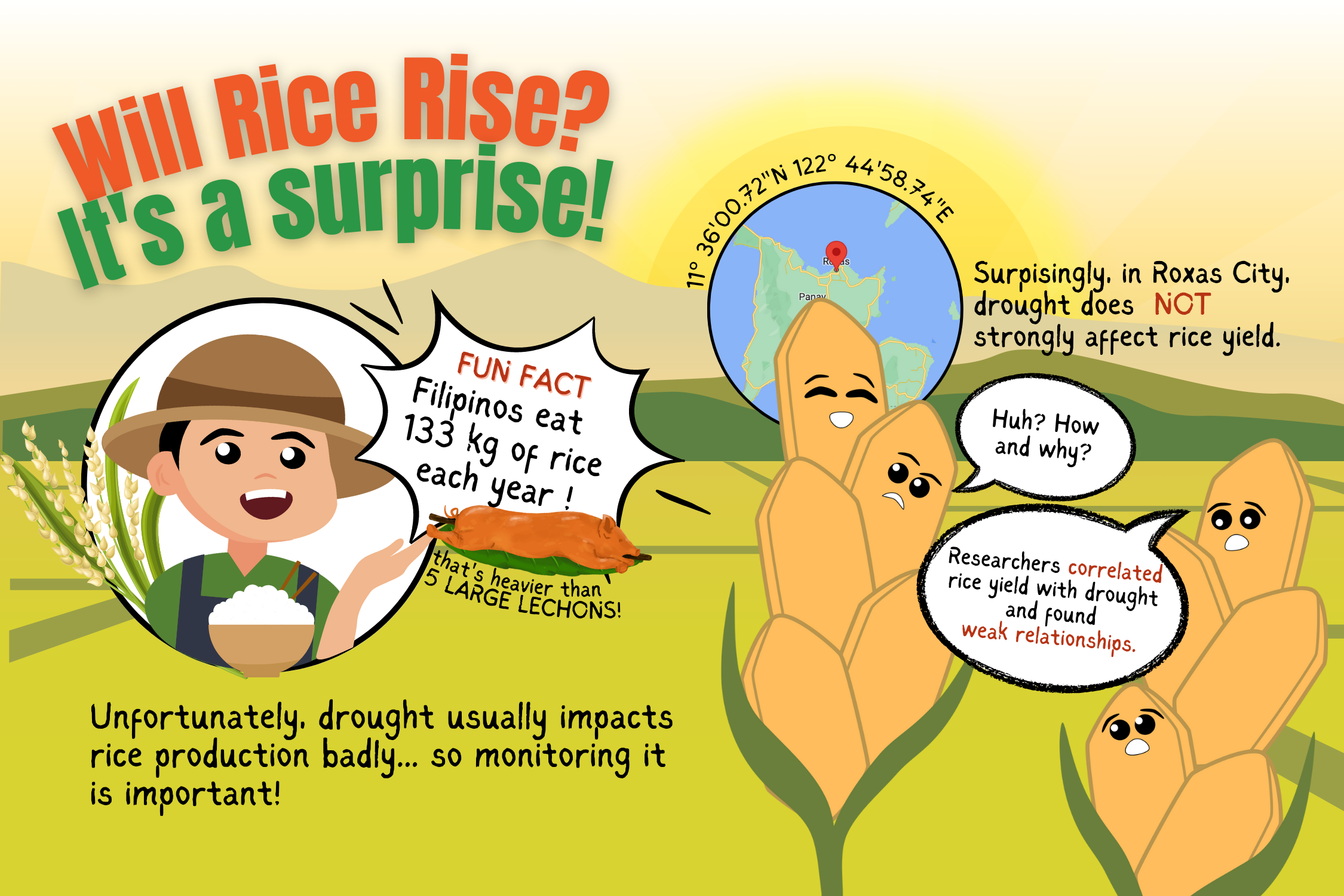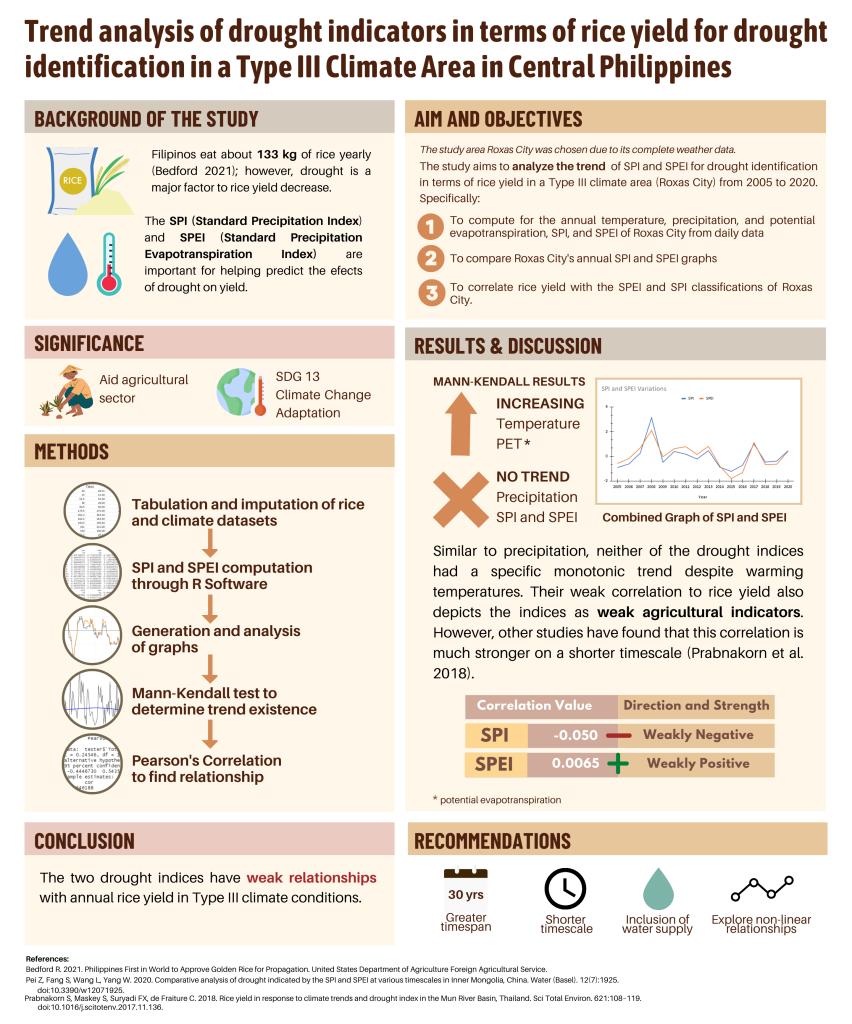Trend analysis of drought indicators in terms of rice yield for drought identification in a Type III climate area in Central Philippines
JOZIL DONNE D. CERNA, MAULYN MURIELLE S. DOMINGUEZ, VINNA YSABELLE U. TUPAS, and ARIS C. LARRODER
Philippine Science High School Western Visayas Campus – Department of Science and Technology (DOST-PSHS WVC), Brgy. Bito-on, Jaro, Iloilo City 5000, Philippines
Abstract
The most utilized drought indices are the Standard Precipitation Index (SPI) and the Standard Precipitation Evapotranspiration Index (SPEI), which are based on precipitation and temperature data. As tools that utilize a combination of meteorological data, this could provide a means to monitor and forecast drought conditions in relation with agriculture. Thus, this study aims to analyze the trend of SPI and SPEI for drought identification in terms of rice yield in Roxas City, Philippines, which is a Type III Climate area. Annual climate parameters (mean, minimum, and maximum temperature, precipitation, and potential evapotranspiration) were run through the Mann-Kendall test to determine trend significance, and rice yield was tested for correlation to SPI and SPEI. It was found that neither of the drought indices had a specific monotonic trend on a 12-month timescale. Rice yield had a weak negative correlation with SPI (r = -0.050) and a weak positive correlation with SPEI (r = 0.065), depicting the indices as weak agricultural indicators. However, other studies have found that this correlation is much stronger on a shorter timescale.
Keywords: increasing temperature, rice yield, drought indices, potential evapotranspiration, precipitation


